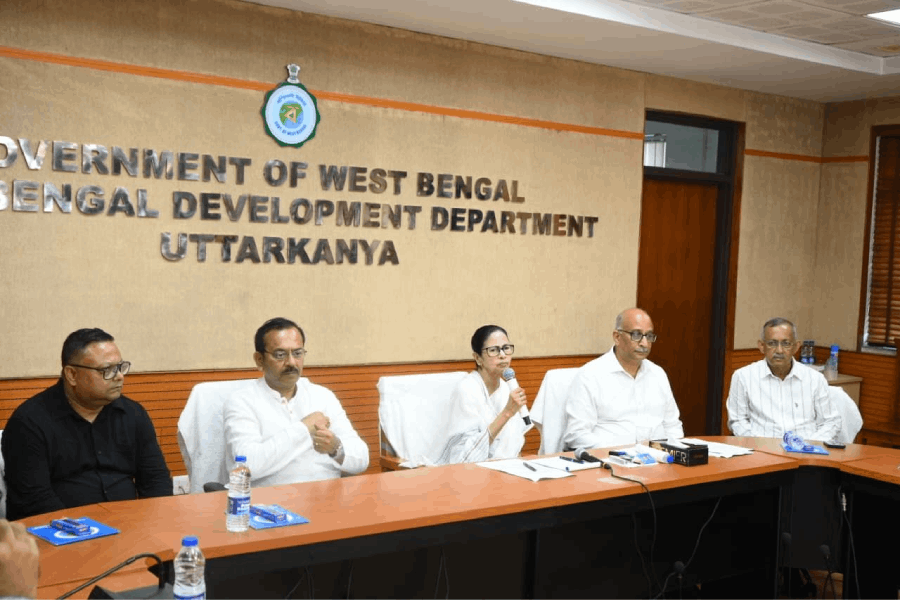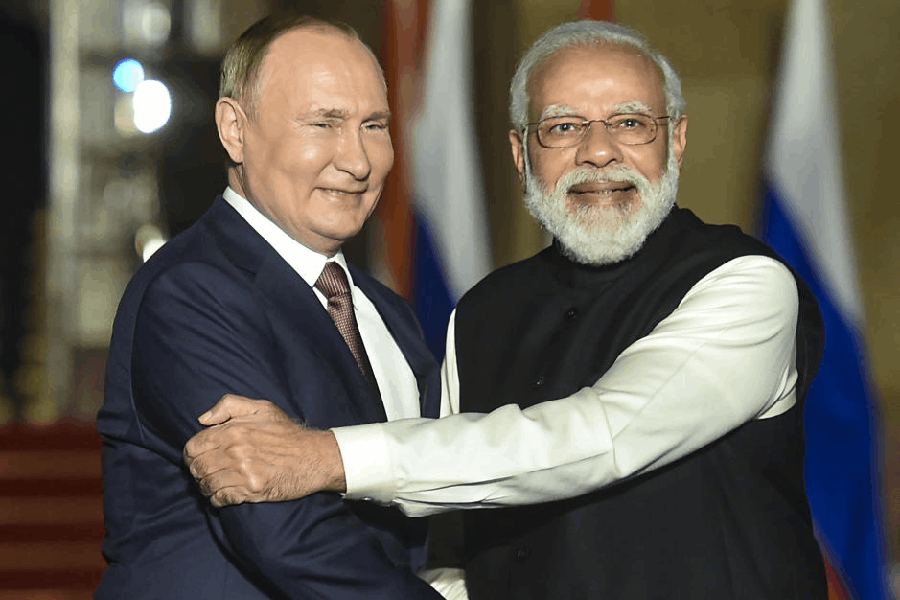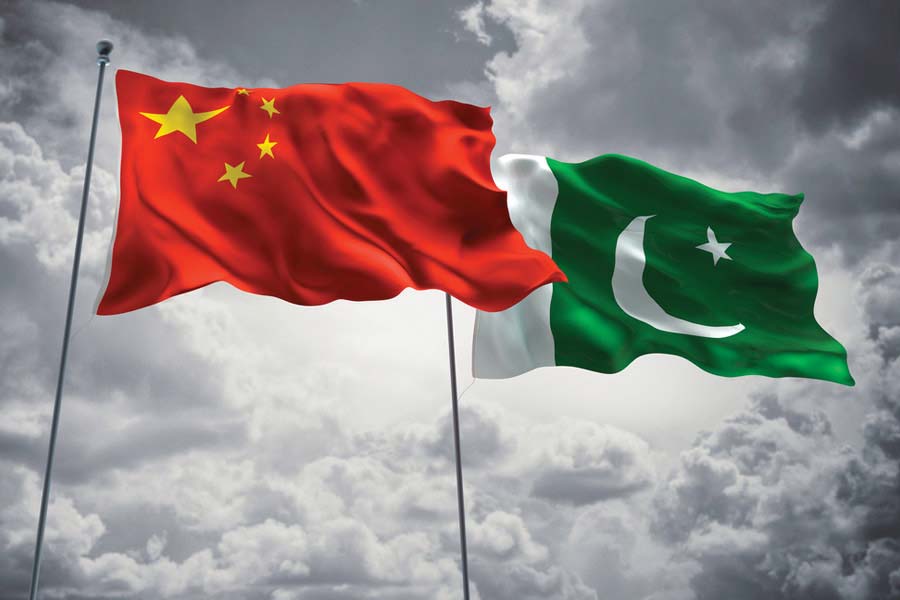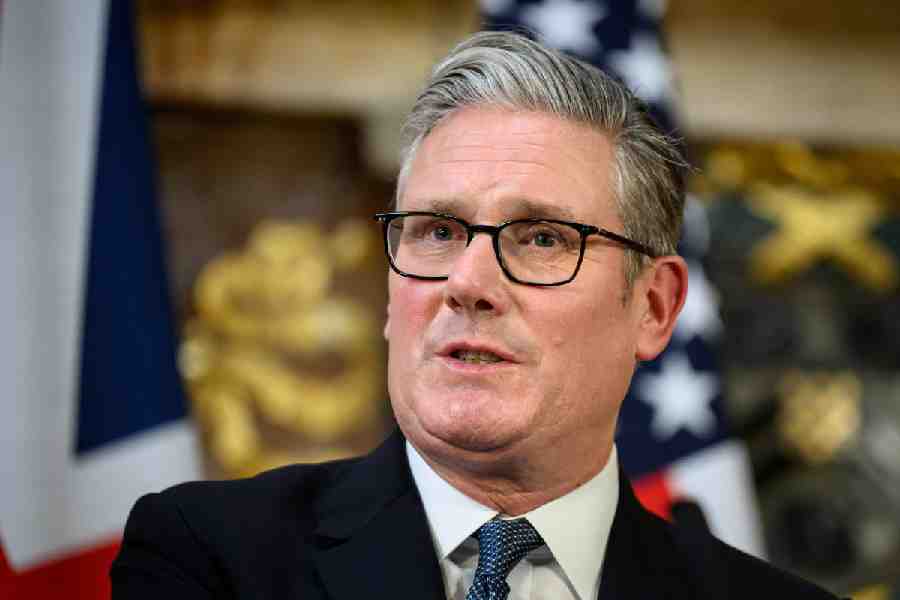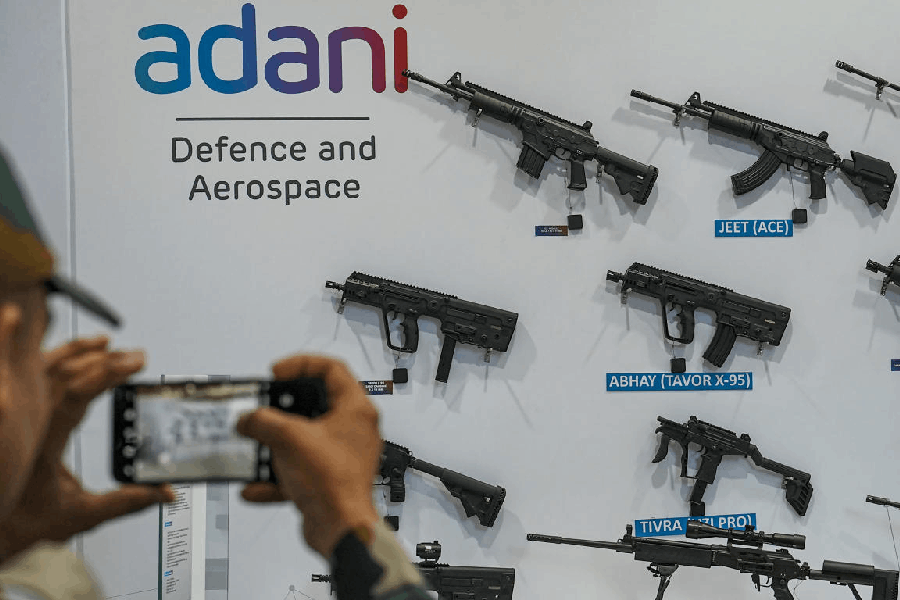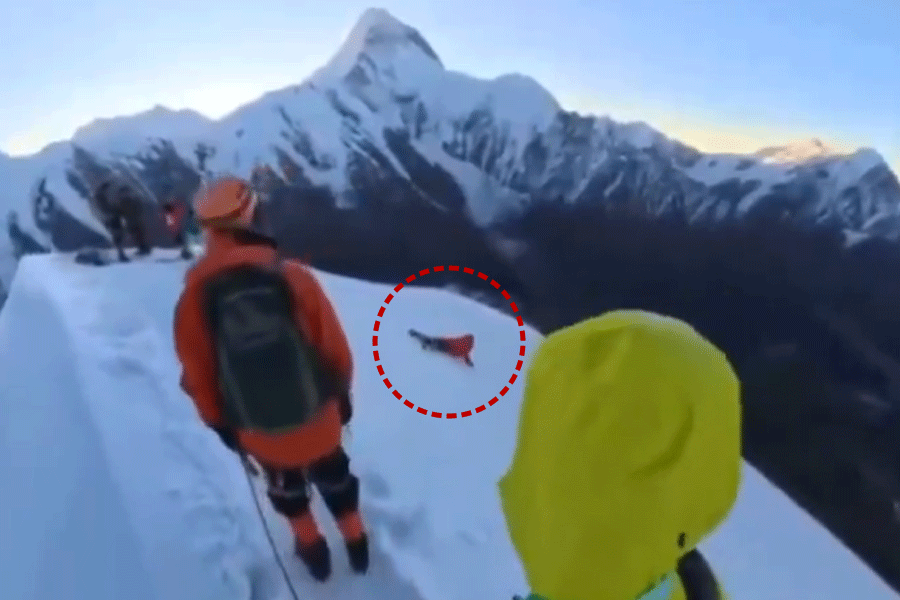 |
| The photograph published in The Telegraph on Saturday |
July 12: Bengal bureaucracy began its weekend by chuckling about the who’s who seen standing behind Manirul Islam, the Trinamul MLA whose name figures in a murder FIR, in a photograph published in The Telegraph and those who escaped.
As the day progressed, however, humour gave way to introspection and some officers said they had little choice but to attend so-called government programmes that invariably morph themselves into or lead up to thinly concealed political spectacles.
In Birbhum, where most of the senior officers in the state lined up on the stage graced by Manirul, the government event was an administrative meeting. Once that was over, the public meeting was held and the “stage performance” took place.
In an attempt to take “governance” as close to the people as possible, chief minister Mamata Banerjee had started the practice of convening administrative meetings away from Writers’ Buildings.
After holding closed-door administrative meetings in the districts, she would hold public programmes — with both politicians and officers on the dais — during which cycles, caste certificates and land patta, not to mention long speeches, would be delivered.
At most meetings, the content of the speeches has been political, but senior IAS officers have had to sit through the speeches.
“The political meetings are given an official touch by including some government activity like patta distribution. But there is little that officers can do as the instruction to attend the meetings comes from the top,” said a senior official.
There have also been instances where the chief minister would ask the officers to say a few words or answer her questions in front of the public — a sure-fire applause-winner that sometimes leaves officials squirming.
In Jhargram in January 2012, the chief minister said the tender for a bridge had been floated and asked the chief secretary, Samar Ghosh, about the status.
Ghosh hesitated initially but managed to say later the tenders for the bridge from Bharsaghat to Nayagram were floated.
“It was not right…. Later, it was found that no tenders were floated. But the then chief secretary was forced to confirm, otherwise it would have been an embarrassment for the chief minister,” recalled an officer.
Several bureaucrats have faced similar situations in the past three years during which the ritual of administrative meetings, followed by public meetings, became the norm.
A trend strikes root
The chief minister held her first review meeting at Jhargram in West Midnapore on July 12, 2011.
Mamata was reviving a practice that former chief minister Siddhartha Sankar Roy had started long ago. The Left Front governments, however, never held such meetings in districts.
“Both Jyoti Basu and Buddhadeb Bhattacharjee held a few meetings with district officials when they visited any district…. But they had never taken top government officials from Writers’ with them,” said an official.
Some bureaucrats recalled that at Mamata’s first district review meeting in Jhargram, only a few senior officials were present.
“The meeting was held to identify the focus areas of the government in Jungle Mahal. Other than the chief secretary, the home secretary and senior district officials, hardly seven to eight secretaries attended the meeting,” said an official.
In Birbhum on Thursday, at least 18 secretaries were on the stage — a wall-to-wall display of IAS officers.
Since the first meeting at Jhargram, the trend of holding district review meetings has caught on. According to unofficial estimates, the chief minister has held at least 65 such meetings across the state in little over 37 months in power.
Over the months, the scope and scale of the meetings has grown and at least 100 officials from various departments, including secretaries, have started travelling with the chief minister to the districts.
Role of officers
From Mamata’s point of view, taking officers along has been an integral part of the plan to send out the message that she was taking the government closer to people.
At the meetings, the chief minister usually introduces the secretaries and key officials to the people and often plays quiz master, firing off questions on ongoing projects.
During a public meeting at Lalgarh in West Midnapore, the district magistrate was asked to furnish the progress report on a road project to connect Netai.
“The then district magistrate, Surendra Gupta, found himself in an embarrassing situation. Before he could even start replying, people started shouting that nothing had been done till then,” recounted an officer.
Initially, it was assumed that such sessions would help jolt the administration out of inertia. But more often than not, the project delays were on account of fundamental problems far deeper than individual shortcomings.
Soon, a perception began taking shape among officers that their utility at such meetings lay in becoming punching bags so that the political leadership can tell the people that it had done its job.
Mamata usually carries details about the district she is visiting. The chief minister’s office prepares a note on the status of the projects in the district concerned. “I have been to at least 20-30 such meetings…. I still don’t know why I need to go for them,” said a department secretary.
The “punching-bag” perception has only struck deeper roots. “A former minorities affairs secretary was pulled up at a district meeting as stipend for the imams had stopped because of funds crunch. He was very senior but he was pulled up in front of juniors. The initial picnic mood among the officers has evaporated,” said an official.
Some officers have tried to skip the district meetings but in vain.
“A few officials told the chief minister after attending the meeting in Burdwan earlier this week that they would go back to Calcutta…. But the chief minister asked them to go with her to Bolpur to attend the administrative meeting there the next day,” said an official.
It was in Bolpur that that the stage graced by Manirul was waiting for the officers.
Debate within
When the district review meetings had started, many officials felt that the exercise might give momentum to development projects.
“But we have realised now that the public meetings serve little purpose and it is most embarrassing for us to attend…. Anybody can be pulled up in public,” said a senior official.
Senior bureaucrats, however, plead helplessness, saying they cannot escape the meetings since the chief secretary is there.
“The then chief secretary, Samar Ghosh, should have raised his voice first…. Even the incumbent CS (Sanjay Mitra), who is very close to the chief minister, could have pointed out that officers could be spared from the public meetings,” said an officer.
This officer drew a distinction between the closed-door district administrative meetings and the public events.
“The administrative meetings are OK since they are governmental. But the public programmes are mainly political, although some pattas or cycles are distributed. We should have refused to attend such programmes at the outset itself,” said an official.
A section of officers, however, did not want to pin the blame on either Ghosh or Mitra.
“Administrative culture is top-down and it starts at the top… If the chief minister wants us to go, there is very little that the chief secretary can do,” said an officer.
According to the officer, no rule prohibits an official from being with the chief minister on a dais during a meeting that may be viewed as political.
During the elections, however, specific guidelines prevent officers from being seen with politicians. “But on whether to be on a dais at a political meeting, there are no rules…. It is only a norm that officers should not be seen in political programmes,” he added.
The bill
District magistrates who handle the programmes said each round of administrative meetings costs the exchequer between Rs 60 lakh and Rs 75 lakh.
A big part of the money is spent on organising the chief minister’s public meeting. “Around 150 people will be on the dais…. According to security specifications, the chief minister’s dais has to be built in a special way. Then, the area has to be barricaded, sound system and other arrangements have to be made and people have to be ferried to the venue and fed. The cost comes to around Rs 30 lakh,” said a district magistrate.
More than 100 people travel with the chief minister. “Often Rs 15 lakh to 20 lakh is spent to meet the costs of their food, petrol and stay. This apart, the security arrangement cost has to be shouldered by the district,” another district magistrate said.
In addition to these, the district authorities often have to spend Rs 20 lakh to Rs 25 lakh to repair roads and government guesthouses in the district before the chief minister’s visit.
A district magistrate said that initially the money was taken from the contingency fund.
“But we usually get Rs 1 lakh from the contingency fund, which is inadequate for the chief minister’s programme. Sometimes funds meant for development projects have had to be used,” he said.
Impact assessment
While the drive to take the secretariat to the people seems to have yielded political dividends for the ruling establishment, the impact on the delivery mechanism has been minimal, said an officer.
“Had the attempt been really successful, Bengal could have generated more mandays (Bengal’s average mandays is 22 in 2013-14) under the Mahatma Gandhi National Rural Employment Guarantee Act. The state could have also created more assets using the scheme (Bengal completed only 29.03 per cent projects in 2013-14),” said a department secretary.
Officials said the chief minister’s visits to the districts often came in the way of day-to-day administrative activities as preparations to ensure a glitch-free tour start at least 10 days in advance.
“The top district officials have to coordinate with Nabanna to prepare reports. They also have to supervise activities such as guesthouse cleaning and electrical checks.
“I have started visiting districts from Wednesday… I attended office yesterday and I have to go to West and East Midnapore on Monday and Tuesday… I could not clear more than 20 files in the entire week,” said a department secretary.
The administrative meeting can easily be held through video-conferencing, which would have saved money, said an official.


